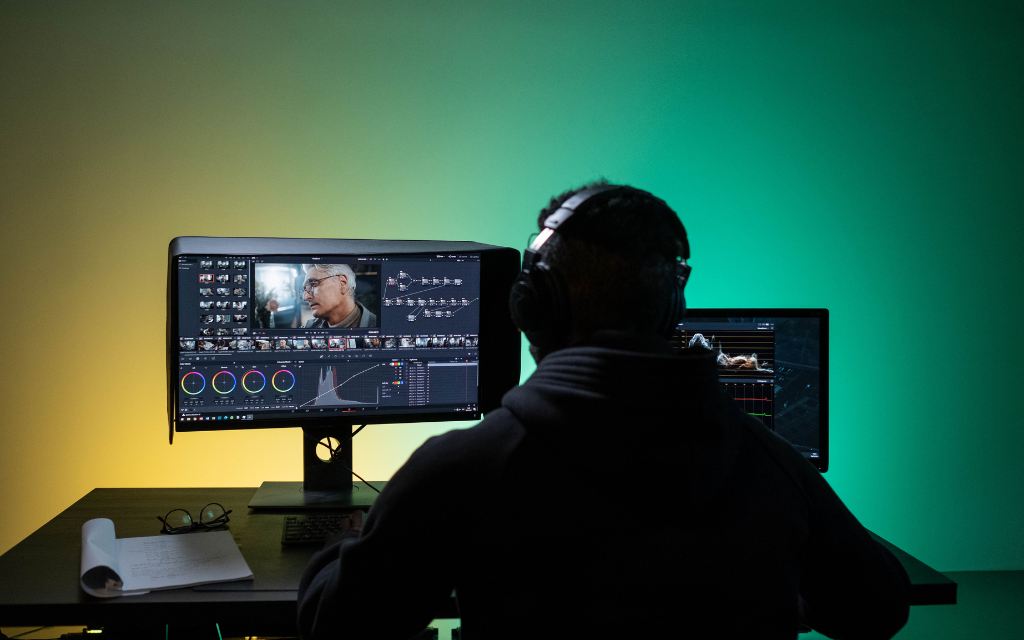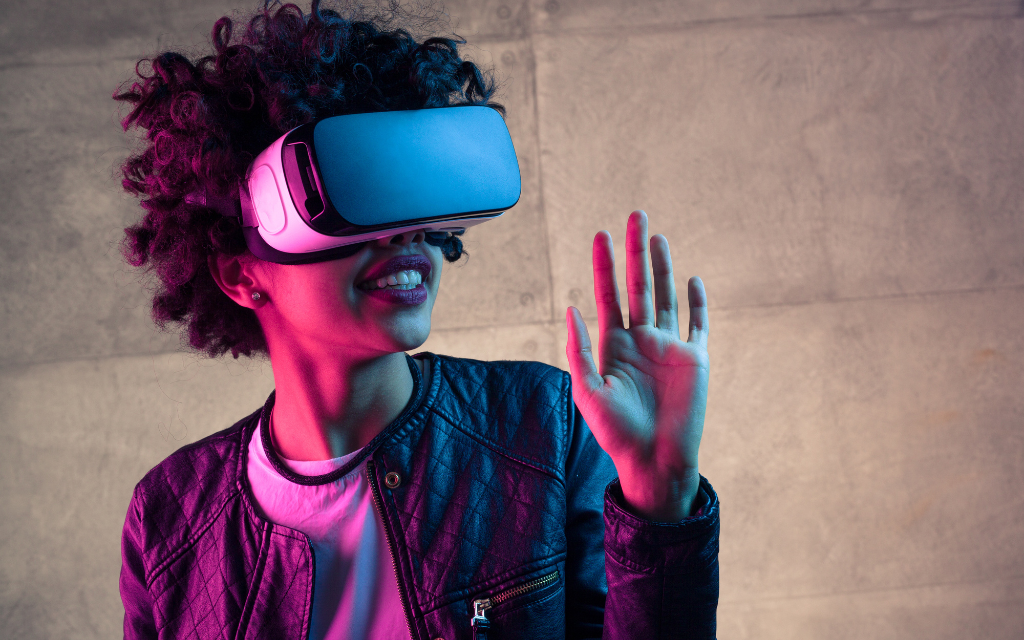Video Technology: A Game-Changer for Media and Business
Do you agree that video technology has revolutionized the way we consume media and conduct business? Well, it’s hard to say no. Today, we’ll go through the evolution of video technology, its impact on media, how businesses are leveraging its capabilities, and the future potential of video technology.

What are the different types of video technology?
From video streaming platforms to video conferencing tools, the demand for high-quality video has never been higher. But have you ever wondered about the different types of video technology that make all this possible? We’ll explain the various types of video technology and their unique characteristics.
1. Analog video
Analog video technology was widely used before the advent of digital video. It involves the continuous representation of video signals as analog signals. These signals are then transferred through cables or broadcasted over the airwaves. Analog video technology is known for its simplicity but lacks the high-quality resolution and clarity that digital video offers.
2. Digital video
Digital video technology revolutionized the way we capture, store, and transmit video. It involves converting analog video signals into digital data that can be easily processed, stored, and transmitted. Digital video offers superior quality, resolution, and clarity compared to analog video. It also allows for easier editing and manipulation of video content.
3. Video codecs
Video codecs are essential in video technology as they compress and decompress video data. They are responsible for reducing the size of video files without compromising the quality too much. Popular video codecs include H.264, H.265 (HEVC), MPEG-2, and VP9. Each codec has its own compression algorithms and efficiency, which impact the file size and quality trade-off.
4. Video streaming
Video streaming technology changed the way we consume video content by allowing us to watch a video over the internet without having to download the entire file first. It works by sending a constant stream of data, usually from a server to a client, in a compressed format that the client can display. There are two main types of streaming: live streaming and on-demand streaming. Services like Netflix and YouTube exemplify on-demand streaming, while live streaming can be seen on platforms like Twitch and Facebook Live. Integral to video streaming are the various streaming protocols, such as HTTP Live Streaming (HLS) and Dynamic Adaptive Streaming over HTTP (DASH), which adjust video quality according to bandwidth availability for a smooth, uninterrupted experience.

The Evolution of Video Technology
1. Analog to Digital: A Shift in Video Technology
The shift from analog to digital video technology has revolutionized the world of video production, offering higher quality footage, greater flexibility, and easier editing capabilities.
The advent of digital technology has revolutionized the world of video production and consumption. Gone are the days of analog cameras and tapes, as digital cameras offer higher quality footage, greater flexibility, and easier editing capabilities. This shift in technology has not only transformed the way videos are created but also how they are shared and consumed across various media platforms.
2. The Impact of Digital Technology on Media
Digital video technology has had a profound impact on the media industry, allowing for faster and more efficient production processes. With advanced features such as instant playback, real-time editing, and wireless transmission options, professionals can capture high-quality footage with ease. Moreover, this transition from analog to digital has opened up new avenues for creativity in storytelling through enhanced special effects and visual techniques that were previously unimaginable with traditional camera systems.
3. Streaming Services
Streaming services have completely transformed the way we consume video content. With advancements in technology, platforms like Netflix and Amazon Prime Video have become household names, offering a vast library of media accessible at our fingertips. This revolution has not only changed the way we watch movies and TV shows but has also revolutionized the business models of traditional media companies.
The emergence of streaming services has had a profound impact on the media industry. Gone are the days when viewers were limited to scheduled programming or physical copies of movies. Now, with just a few clicks, we can stream high-quality videos on various devices anytime and anywhere. The integration of camera technology into smartphones and other portable devices enables anyone to create and share their own video content effortlessly, further democratizing access to media production.
4. Virtual Reality (VR) and Augmented Reality (AR)
Virtual Reality (VR) and Augmented Reality (AR) have revolutionized the video experience, offering immersive and interactive ways to engage with media. These technologies bring a new dimension to storytelling, making viewers feel like they are part of the action. With VR and AR, users can explore virtual environments, interact with digital objects, and experience content from different perspectives.
- Enhanced immersion: VR allows users to step into a virtual world through headsets or goggles, providing a fully immersive experience.
- Interactive storytelling: AR overlays digital elements onto the real world, allowing for interactive storytelling in various industries such as gaming and marketing.
- New filming techniques: VR cameras capture 360-degree footage that creates an engaging visual experience for viewers.
- Business applications: Both VR and AR have practical applications beyond entertainment. They are used in training simulations, product visualization, remote collaboration, and more.

The Impact of Video Technology on Media
1. Changing Media Landscape: Video as the Preferred Content Format
The Rise of Video Streaming Platforms has revolutionized the way people consume media. Shifting Consumer Preferences towards Video Content have further propelled this trend, as more individuals are opting for video over traditional forms of entertainment. Additionally, Video’s Dominance in Social Media is undeniable, with platforms such as Instagram and TikTok heavily relying on video content to engage users.
- Streaming platforms like Netflix and YouTube have transformed the media landscape.
- Consumers now prefer watching videos over other forms of content.
- Social media platforms heavily rely on video to captivate audiences.
2. Increasing Engagement: Video’s Power to Captivate Audiences
The Role of Visual Storytelling in Captivating Viewers:
Visual storytelling is a powerful tool for captivating audiences through videos. By combining compelling narratives with stunning visuals, brands can create an immersive experience that resonates with viewers on a deeper level. The use of visual elements such as graphics, animations, and cinematic techniques enhances the overall storytelling process, making it more engaging and memorable.
Interactive Features and Immersive Experiences in Videos:
To further captivate audiences, videos can incorporate interactive features that encourage active participation from viewers. This can include clickable annotations or hotspots within the video itself, allowing users to navigate through different paths or access additional information. By providing an immersive experience where viewers feel involved and engaged, brands can hold their attention for longer periods of time.
Utilizing Emotional Appeals to Connect with Audiences:
Emotional appeals are a key component in capturing audience engagement through videos. Connecting on an emotional level helps forge stronger connections between brands and consumers by evoking specific feelings or reactions. Whether it’s creating heartwarming stories or triggering excitement through thrilling content, leveraging emotions allows videos to leave a lasting impact on audiences’ minds.
3. Personalization and Targeted Advertising: Leveraging Video Data
With video technology, companies can harness user data for tailored recommendations, dynamic ad insertion, and real-time audience targeting:
- Utilizing user data allows platforms to provide personalized recommendations based on individual viewing preferences.
- Dynamic ad insertion enables targeted advertising by inserting relevant ads in real-time during video playback.
Moreover, it can be used for advanced personalization:
- AI algorithms analyze user data to understand preferences and behavior patterns, enabling platforms to deliver highly personalized content suggestions.
- With advanced personalization techniques, businesses can create more engaging advertisements that resonate with their target audiences.

The Influence of Video Technology in Business
1. Communication and Collaboration: Video Conferencing and Meetings
Enhanced remote communication is now possible through the use of video conferencing and meetings. This technology allows teams to connect in real-time, regardless of their physical location, fostering improved collaboration and teamwork. With clear audio and high-quality video, participants can communicate effectively, share ideas, and work together towards common goals.
Video technology has revolutionized team collaboration by providing a platform for seamless communication and instant feedback. Through virtual meetings, team members can collaborate on projects more efficiently than ever before. This not only saves time but also enhances productivity as decisions can be made quickly without the need for lengthy email chains or delayed responses.
Efficient decision-making is another benefit of video conferencing and meetings. By bringing stakeholders together virtually, important discussions can take place in real-time without the delays associated with traditional methods such as scheduling face-to-face meetings or waiting for written reports. This enables organizations to make timely decisions that drive business growth while ensuring all relevant parties are involved in the process.
2. Training and Education: Video-Based Learning
Engaging and interactive learning experiences are revolutionizing the education landscape with video-based learning. With the use of video technology, learners can actively participate in their education, making it more enjoyable and effective.
Flexible access to educational content is another advantage of video-based learning. Learners can access videos anytime and anywhere, allowing them to learn at their own pace and convenience. This flexibility greatly enhances the accessibility of education for individuals with busy schedules or limited resources.
Video-based learning also promotes effective knowledge retention. The combination of visual and auditory cues in videos helps learners retain information better compared to traditional text-based methods. Moreover, interactive elements such as quizzes or discussions integrated into the videos further reinforce understanding and memory recall.
3. Marketing and Sales: Video’s Role in Promotions and Sales Funnels
Increased brand awareness is a key benefit of compelling video promotions. By creating visually engaging videos, businesses can capture the attention of their target audience and effectively communicate their brand message. This not only helps to attract new customers but also strengthens the relationship with existing ones.
Video-based advertising campaigns have proven to be highly effective in boosting customer engagement. With interactive and immersive content, businesses are able to connect with their audience on a deeper level, resulting in increased interest and interaction with the brand. This heightened engagement leads to higher conversion rates and ultimately drives sales.
Incorporating targeted videos into sales funnels has shown significant improvements in conversion rates. By tailoring video content specifically for different stages of the buyer’s journey, businesses can guide potential customers towards making a purchase decision more effectively. These personalized videos help build trust, showcase product benefits, and address any concerns or objections that may arise along the way.

The Future of Video Technology
Video technology continues to evolve at a rapid pace thanks to advancements in artificial intelligence (AI), interactive experiences through 360-degree videos, as well as the growing popularity of live streaming capabilities. These developments offer exciting opportunities for businesses looking to enhance their marketing strategies or engage with customers on a deeper level.
1. Artificial Intelligence (AI) and Machine Learning: Advancements in Video Analysis
Video analysis has seen significant advancements through the use of Artificial Intelligence (AI) and Machine Learning. These technologies enable automatic recognition, categorization, and tagging of video content, improving the efficiency and accuracy of video analysis processes.
With AI and Machine Learning algorithms, video analysis can now extract valuable insights from large volumes of visual data in real-time. This allows businesses to quickly identify patterns, trends, and anomalies within their videos, leading to more informed decision-making and enhanced security measures. Additionally, these advancements have paved the way for applications such as facial recognition technology and object detection systems that contribute to improved surveillance systems.
2. Interactive and Immersive Experiences: The Rise of 360-degree Video
Interactive and immersive experiences have become increasingly popular with the rise of 360-degree video technology. This innovative form of video allows viewers to fully engage with the content, providing a more realistic and captivating experience. Some key features include:
- Full immersion: 360-degree videos allow users to feel like they are physically present in the environment being filmed.
- Interactivity: Viewers can control their perspective by swiping or moving their device, giving them autonomy over what they see.
- Enhanced storytelling: With 360-degree videos, storytellers can create more dynamic narratives by guiding viewers’ attention through different perspectives.
These advancements in video technology have opened up new possibilities for media and business industries alike.
3. Live Streaming and Real-Time Video: Instantaneous Connection
Live streaming and real-time video have revolutionized the way we connect and share information. With the advent of high-speed internet and advanced video technology, individuals can now broadcast events, presentations, and performances instantaneously to a global audience. This has opened up new opportunities for businesses to engage with customers in real time, enabling interactive discussions and enhancing brand visibility. Additionally, live streaming has transformed media consumption habits by allowing viewers to access content on-demand from anywhere in the world. The seamless integration of live video into our daily lives has truly made instantaneous connection a reality.
